Warning: Undefined array key "width" in /var/www/vhosts/custompcreview.com/public_html/wp-includes/media.php on line 1429
Warning: Undefined array key "width" in /var/www/vhosts/custompcreview.com/public_html/wp-includes/media.php on line 1434
Warning: Undefined array key "height" in /var/www/vhosts/custompcreview.com/public_html/wp-includes/media.php on line 1434
Warning: Undefined array key "width" in /var/www/vhosts/custompcreview.com/public_html/wp-includes/media.php on line 1429
Warning: Undefined array key "width" in /var/www/vhosts/custompcreview.com/public_html/wp-includes/media.php on line 1434
Warning: Undefined array key "height" in /var/www/vhosts/custompcreview.com/public_html/wp-includes/media.php on line 1434
[section label=1. Introduction]
A Tale of Two Storage Technologies
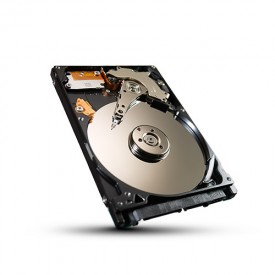 By now we all know that for the most part there are two major storage technologies out there – solid state drives (SSDs) and traditional hard drives (HDDs). Whereas solid state drives rely on NAND flash memory and a memory controller similar to how RAM in a computer works, traditional hard drives rely on spinning platters and a magnetic head that picks up data as the drive spins at thousands of rotations per minute.
By now we all know that for the most part there are two major storage technologies out there – solid state drives (SSDs) and traditional hard drives (HDDs). Whereas solid state drives rely on NAND flash memory and a memory controller similar to how RAM in a computer works, traditional hard drives rely on spinning platters and a magnetic head that picks up data as the drive spins at thousands of rotations per minute.
SSD vs HDD: Pros and Cons
On one hand we’ve got the newcomer to the market, the SSD, and if you’ve been following up on your SSD reviews, you’ll know that they’re quiet, power efficient, shock proof, and fast. In fact, in most cases, they’re many, many times faster than the traditional hard drives. The downside? Well, they’re currently pretty limited in capacity, and at larger capacities, prices are quite exorbitant. Not to mention, up until the recent improvements in the memory controllers and NAND flash memory, SSD reliability was questionable at best.
On the other hand, we’ve got the traditional hard drive. Traditional because the core design of these drives really haven’t changed all that much since like 1954. Yeah, we’ve had minor improvements to the drive’s design, but the core design underlying this technology has been pretty much been the same. The upside? Well traditional hard drives have boatloads of capacity and they are relatively inexpensive. The downside? Well, they’re slow. Very slow.
FAST (Flash Assisted Storage Technology)
Luckily for us, Seagate Technology, one of the world’s largest hard drive manufacturers, has also noticed the apparent lack of a middle ground between the hard drive and the SSD, and they’ve introduced the Seagate Momentus XT Solid State Hybrid Drive, or SSHD. Now the idea of this hybrid drive is to combine both the hard drive and the solid state drive into a single hybrid drive, theoretically giving users the speed of a solid state drive with the capacity and price of a traditional hard drive. In order to achieve that, Seagate is using a technology they call FAST, or Flash Assisted Storage Technology, which is basically their method of combining a small amount of NAND flash memory into one of their hard drives to act as a cache thereby allowing users to attain the best of the both worlds – SSD and HDD.
| SPECIFICATIONS | |
|---|---|
| Model Number | ST750LX003 |
| Interface | SATA 6Gb/s |
| Cache | 32MB |
| Capacity | 750GB |
| PERFORMANCE | |
| Spin Speed (RPM) | 7200 RPM |
| Average latency | 4.20ms |
| Random read seek time | 11.0ms |
| Random write seek time | 13.0ms |
| I/O data transfer rate | 600MB/s |
| Unrecoverable read errors | 1 in 1014 |
| RELIABILITY | |
| Annual Failure Rate | 0.5% |
| POWER | |
| Average idle power | 1.2W |
| Average operating power | 2.4W |
| Maximum start current, DC | 1.2 |
| ACOUSTICS | |
| Acoustics (Idle Volume) | 2.3 bels |
| Acoustics (Seek Volume) | 2.6 bels |
| FEATURES | |
| Storage Type | Solid State Hybrid |
So, today we’ll be reviewing the Seagate Momentus XT Solid State Hybrid Drive (SSHD), and the specific drive we have today is the second generation of the Momentus XT, the Momentus XT 750GB. Whereas the first generation only came with a capacity of 500GB of storage capacity and 4GB of onboard NAND flash memory, the second generation drive comes with a storage capacity of 750GB and an onboard cache of 8GB of NAND flash memory. Additionally, Seagate has also tweaked the firmware and made a couple other minor improvements to this second generation drive, so without further ado, let’s see what this “SSHD” can do!
[section label=2. A Closer Look]
A Closer Look at the Momentus XT 750GB
Since Seagate just sent the bare drive itself, I don’t have an unboxing for you, but here’s what the top of the drive looks like. From the top, there’s actually no way to even tell this thing has 8GB of SLC NAND in it. Up top you get the drive’s model, the Seagate Momentus XT and at the bottom you get information about the drive such as the firmware. For this drive, you can see that the firmware is revision SM12.
At the front of the drive, you get the SATA 3 6Gb/s connector along with the SATA power connector. Since the core of this drive is still a traditional hard drive, you aren’t going to benefit too much from using the SATA 3 6Gb/s interface. That being said, if you do happen to have a SATA 3 6Gb/s port available, you should definitely use it.
The bottom of the drive looks exactly like a traditional hard drive as well. You can clearly see the outline of the platters down here as well. Inside the drive you also get 8GB of SLC (Single Level Cell) NAND. The reason for this is because SLC NAND, unlike MLC (Multi Level Cell) NAND used in most consumer SSDs today is much more resilient to wear.
[section label=3. ATTO Disk Bench / Crystal Disk Mark]
Sandy Bridge Test Bench
CPU: Intel Core i5 2500K
Motherboard: Asrock Z68 Fatal1ty Professional Gen 3 (Intel SATA 3 6Gb/s, AHCI mode)
Graphics: Intel HD3000 Graphics
Memory: Gskill Sniper 1866MHz DDR3 1.5v
Storage: Patriot Pyro SE 120gb
Power Supply: Corsair HX650
Case: HSPC High Speed Tech Station
Special thanks to HSPC for providing us with the High Speed Tech Station (Large) for our test bench.
Since the caching feature of the Momentus XT is quite unique and requires the drive to “learn” the user’s usage patterns, I ran each benchmark on the Momentus XT three times prior to recording the third run only.
Momentus XT 750GB Performance
ATTO Disk Benchmark v2.46
ATTO Disk Benchmark has lately become one of the industry’s most popular benchmarks for testing SSD read/write speeds, but also works very well with HDDs as well. This benchmark allows read and write testing using predefined block sizes and gives us a good idea of read/write speeds with different sized files.
In the ATTO Disk Benchmark, we can see that the Seagate Momentus XT 750GB is much faster than the Western Digital Scorpio Black 250GB even as a hard drive itself. However, this test is a tad bit unfair as the Momentus XT is a 750GB drive, meaning the data is much more dense on the drive than the Scorpio Black, which is why it’s able to achieve much faster read/write speeds. Despite the Momentus XT having the 8GB SLC NAND, it doesn’t seem to benefit much here.
Crystal Disk Mark 3.0.1 x64
Crystal Disk Mark is another popular benchmark which allows us to measure both sequential read/write speeds as well as random read/write speeds. Normally for SSDs (SandForce especially), we run the test using both random fill (incompressible data which simulates music, video, pictures, etc.) and 0 fill (compressible data), but hard drives don’t perform differently when loaded with compressible or incompressible data, so we’ll be running the random fill test only.
In Crystal Disk Mark, we again see that the Momentus XT is capable of much faster sequential reads/writes than the Scorpio Black, mostly attributed to the fact that it simply has denser platters. However, if you take a look at the 4k and 4k 32, it does seem like the Scorpio Black has the edge here, so in theory if both these drives are traditional hard drives, the Scorpio Black *should* perform a tad bit better when it comes to operations requiring random small file reads/writes (such as system booting or application launching).

[section label=4. HD Tune / PC Mark 7]
Momentus XT 750GB Performance
HD Tune 2.55
As its name implies, HD Tune is a pretty standard benchmark for hard drive benchmarking. It gives us a good idea of both the drive’s transfer rates and the drive’s access times.
Again, we see that the Momentus XT does outperform the Scorpio Black, in sequential transfer rates, but otherwise the access times seem very similar. Underneath all the technology the Momentus XT is still, just a hard drive.
PC Mark 7
The PC Mark 7 storage test tests the storage drives under many different real world tests such as gaming, video editing, etc. This is most representative of the drive’s performance under real world situations.
Here we see the PC Mark 7 run off the Scorpio Black. As we see here, the drive doesn’t perform very well at all, coming in at only 1727 points. The “starting applications” performance is abysmally slow, coming in at only 2.71MB/s. Safe to say, if what you’re using is coming in at this speed or slower, it’s time to make that upgrade.
Next, we ran PC Mark 7 on the Momentus XT and for the first time we are seeing it pull away from the Scorpio Black. The most surprising benchmark in this benchmark suite was the “starting applications” benchmark. In this benchmark, the Momentus XT was able to score 14.25MB/s, dominating the Scorpio Black by 426%. Scores like these really do back up Seagate’s claim that the Momentus XT performs “like an SSD”.
| SSD | PC Mark 7 |
| SanDisk Extreme 240GB | 5273 |
| Crucial m4 128GB | 5214 |
| Patriot Pyro SE 120GB | 5042 |
| Kingston V+200 120GB | 4711 |
| OCZ Agility 3 120GB | 4701 |
| Corsair Force 3 180GB | 4615 |
| Seagate Momentus XT 750GB | 3247 |
| WD Scorpio Black 250GB | 1727 |
Finally, comparing the Momentus XT’s score to some of the scores for SSDs we’ve tested previously, the Momentus XT is able to come in between the Scorpio Black and the Corsair Force 180GB. I’d say that’s not bad for a hard drive with a bit of NAND in it. Wouldn’t you?
[section label=4. Boot Up]
Momentus XT 750GB Performance
Boot Up
In order to really test the Momentus XT’s caching feature, we conducted a boot up time comparison test between the OCZ Vertex 3 120GB SSD, the Seagate Momentus XT 750GB, and the Western Digital Scorpio Black 250GB. For more details on the boot up time comparison test, be sure to visit the article here.
As you can see from the video above, the Momentus XT was able to perform quite respectably once the drive “learned” the boot up sequence. On the third boot, the Momentus XT was able to boot in 45.5 seconds, booting a full 12.8 seconds faster than the first boot which came in at 58.3 seconds. Additionally, on the third boot the Momentus XT was able to pull off a boot time of only around 15.5 seconds slower than the OCZ Vertex 3, which isn’t bad at all. Compared to our traditional hard drive, the Scorpio Black, the Momentus XT on the third boot was able to boot a full 28.5 seconds faster. What’s also interesting is that it seems like the drive’s cache was already getting to work even on the first boot, booting 15.7 seconds faster than the Scorpio Black.
Of course, keep in mind the times taken here are cold boots, which means I am including the entire boot sequence including loading bios and all that good stuff.
[section label=5. Conclusion]
Momentus XT 750GB Conclusions
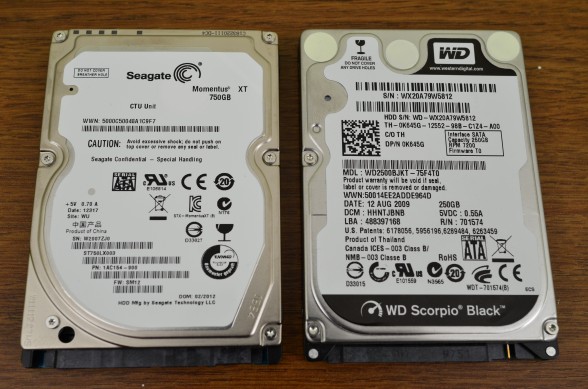 Overall, I found it a tad bit difficult to really sum up this drive in a single word because it’s definitely something for a certain group of people, and not that much for another.
Overall, I found it a tad bit difficult to really sum up this drive in a single word because it’s definitely something for a certain group of people, and not that much for another.
To be honest, in the majority of our benchmarks it was really difficult to even notice that the drive had an internal NAND chip sitting in there. It just didn’t really do much. The benchmarks constantly threw random data sets at the drive, so it was really hard for the cache to work properly. Because of this, if you’re planning to use this drive as a storage drive where all you’re doing with the drive is random, large sequential transfers this drive probably won’t be any better than say another comparable 750GB 7200rpm traditional hard drive.
That being said, once we moved over to PC Mark 7, the performance improvement was certainly nothing to scoff at. In PC Mark 7, the drive was able to put up very solid numbers in both the “starting applications” and the “gaming” benchmarks, which pushed it up way past the Scorpio Black. Additionally, with the boot up time test we saw that while the Momentus XT ultimately wasn’t able to boot up quite as fast as the SSD, it was able to come close, at only 15 seconds behind. Of course, it was able to boot up a full 28.5 seconds faster than the Scorpio Black, so I think it’s safe to say that the cache works, and it work pretty damn well.
Looking at pricing on the Momentus XT, it’s definitely up there, but I think it’s still fair. On Amazon, the drive tested today, the Momentus XT 750GB is $174.99 while the Western Digital Scorpio Black 750GB is actually more expensive at $179.95. However, the non XT traditional Seagate Momentus 750GB 7200RPM (Bare Drive) comes in at only $114.22 and the Hitachi Travelstar 7200RPM 750GB comes in at only $119.99, so if you’re not looking for extra performance, but just that extra capacity, those are options as well. As for the OCZ Vertex 3, it does come in at $169.99, which is cheaper than the Momentus XT, but it only comes with 120GB, which is 630GB less than the Momentus XT.
Bottom Line
For those on a desktop with plenty of expansion room and are thinking about either a SSD or the Momentus XT, I’d still take the SSD in a heartbeat. Make no mistake, in certain situations the Momentus XT is “like” an SSD, but the bottom line is that it still isn’t.
However, I feel like this drive was designed for a different purpose in mind. Consider the situation where a notebook owner is looking to upgrade that 160GB 5400RPM drive included with the notebook because it simply didn’t offer enough capacity. Most notebooks these days only have the capability to fit a single 2.5″ drive, and if you need something like 750GB, SSDs are just simply not an option. While higher capacity 240GB or 480GB SSDs do exist, they will also run you somewhere in the neighborhood of $300 – $700+ respectively. Considering the cost, if you’re currently on a notebook with no expansion space and you’re looking for a ton of disk space in addition to SSD “like” performance, the Momentus XT is quite possibly the only way to do it without putting your house down for a second mortgage.
Special thanks to Seagate Technology for making this review possible.
The Seagate Momentus XT 750GB 7200RPM Solid State Hybrid Drive is currently available on Amazon.

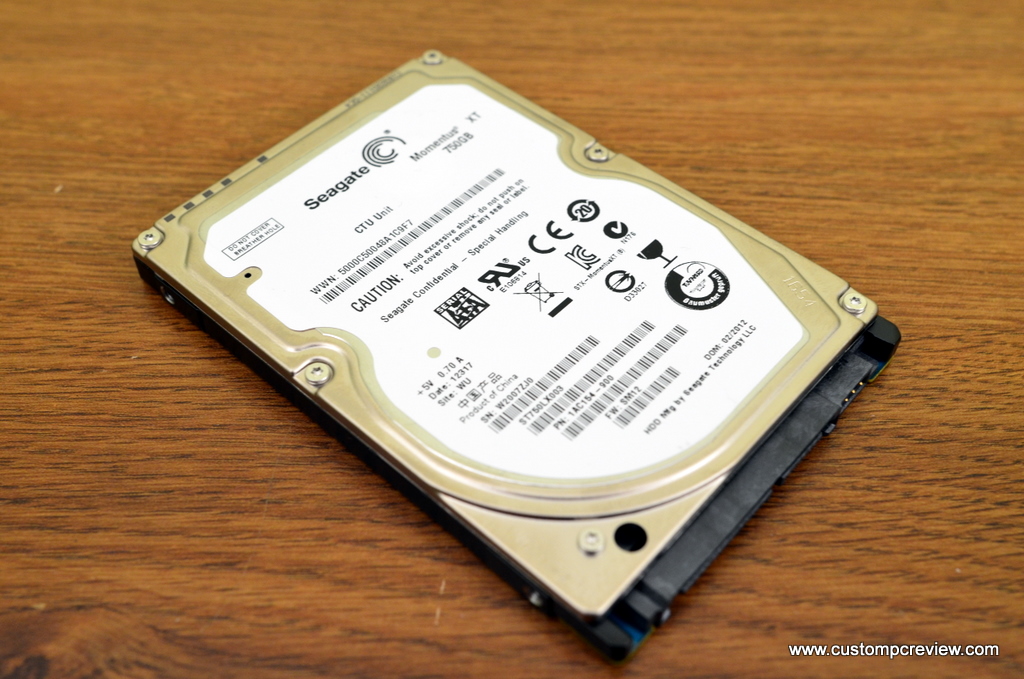
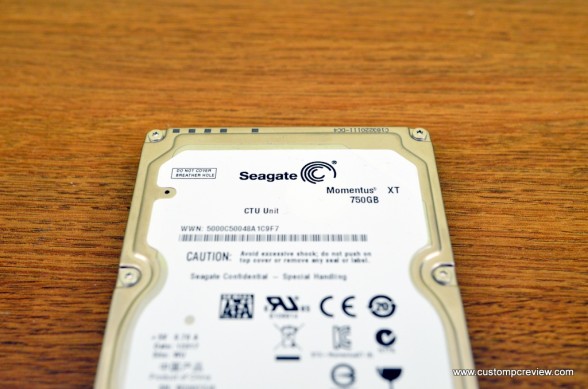
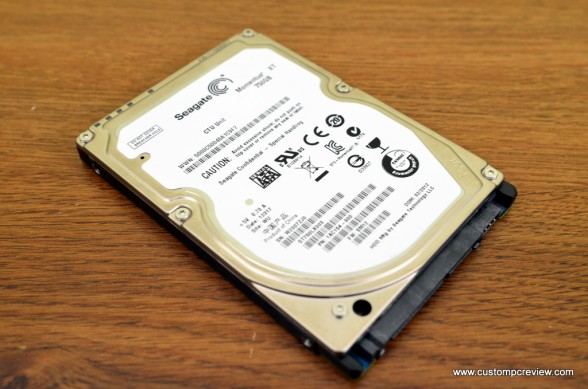
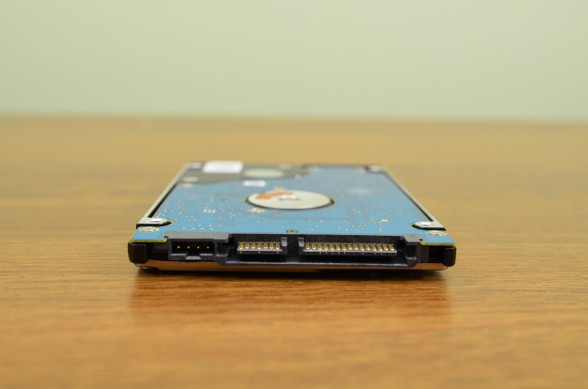
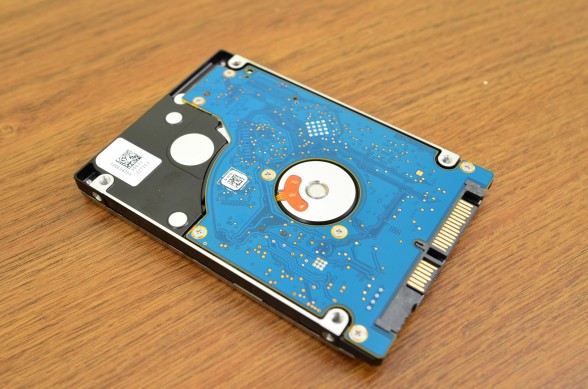
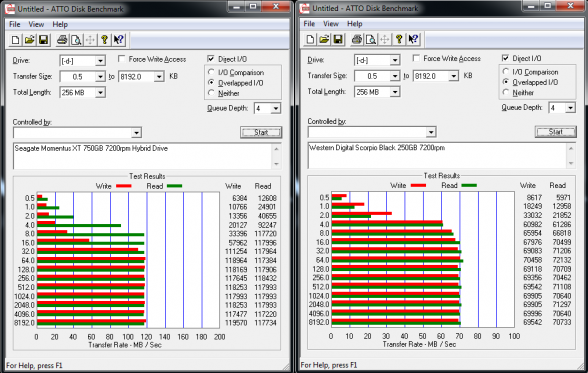
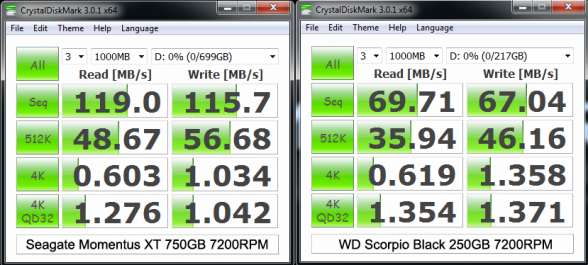
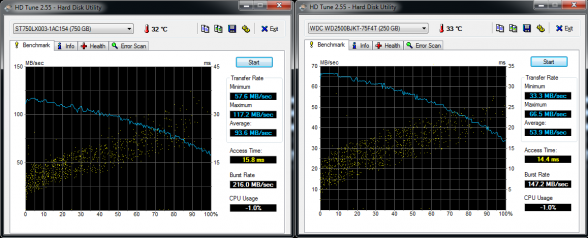
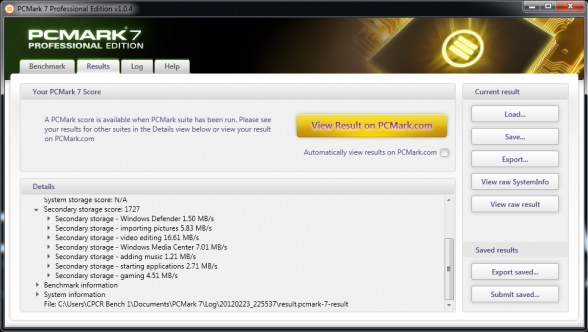
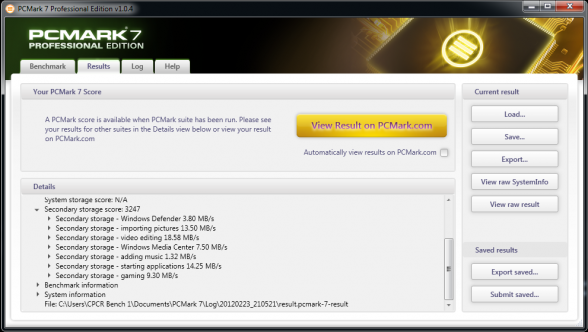
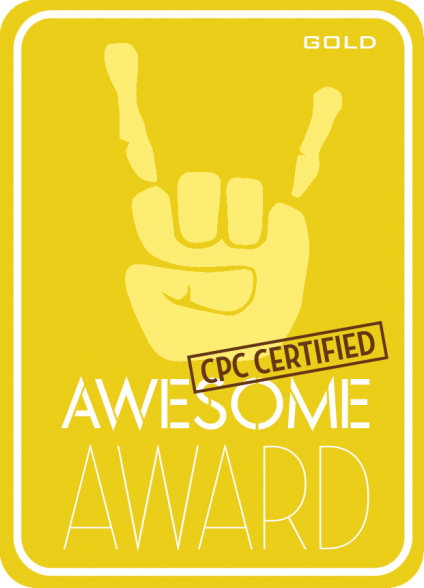
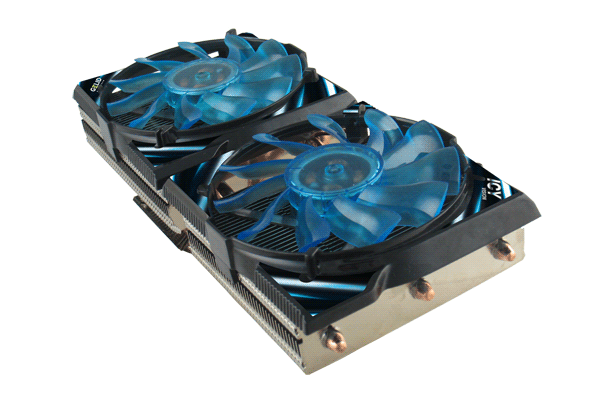
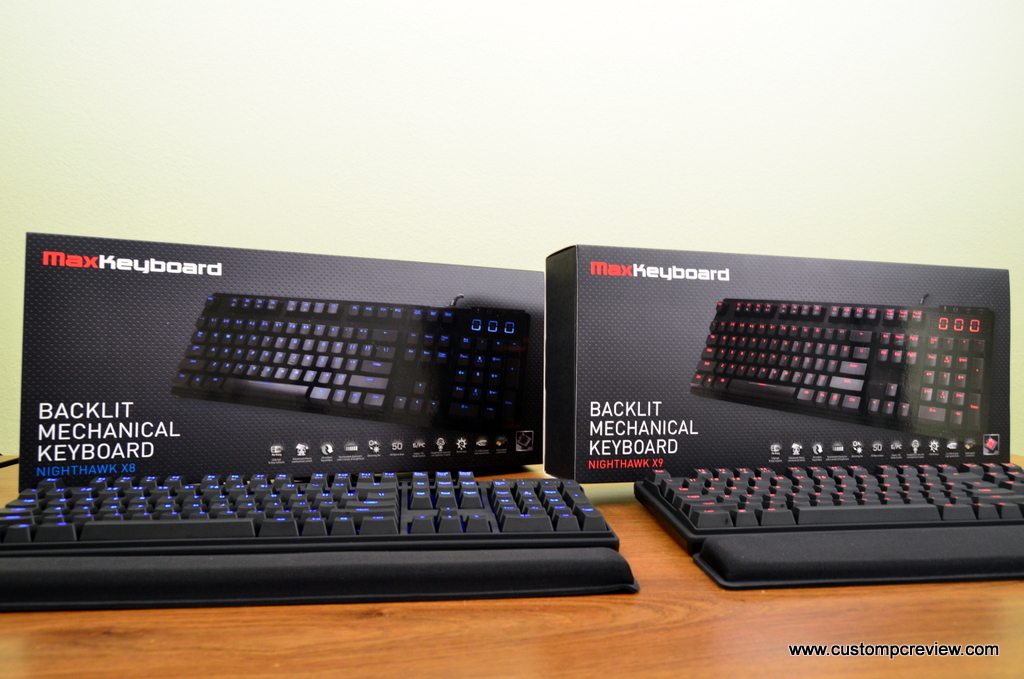
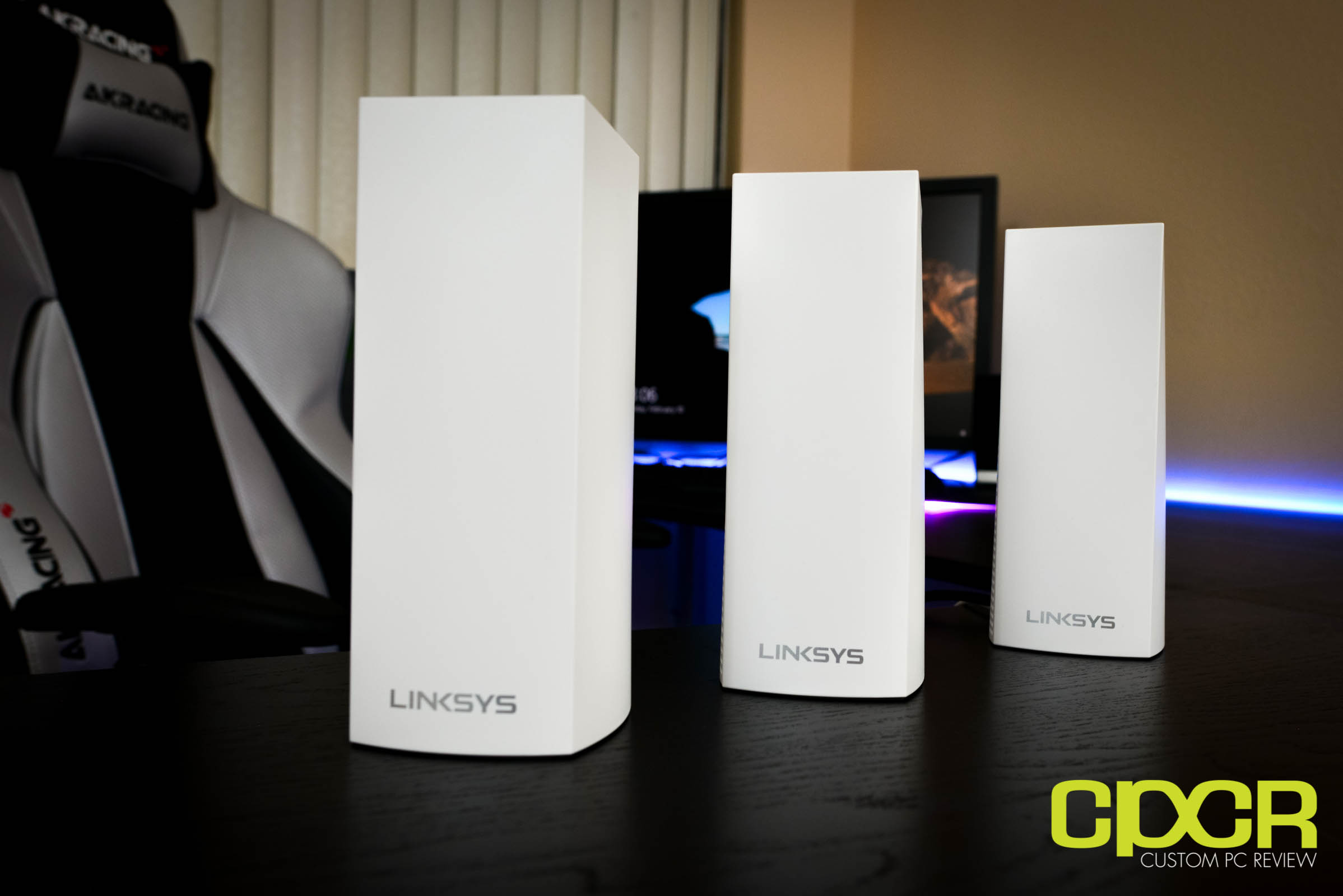
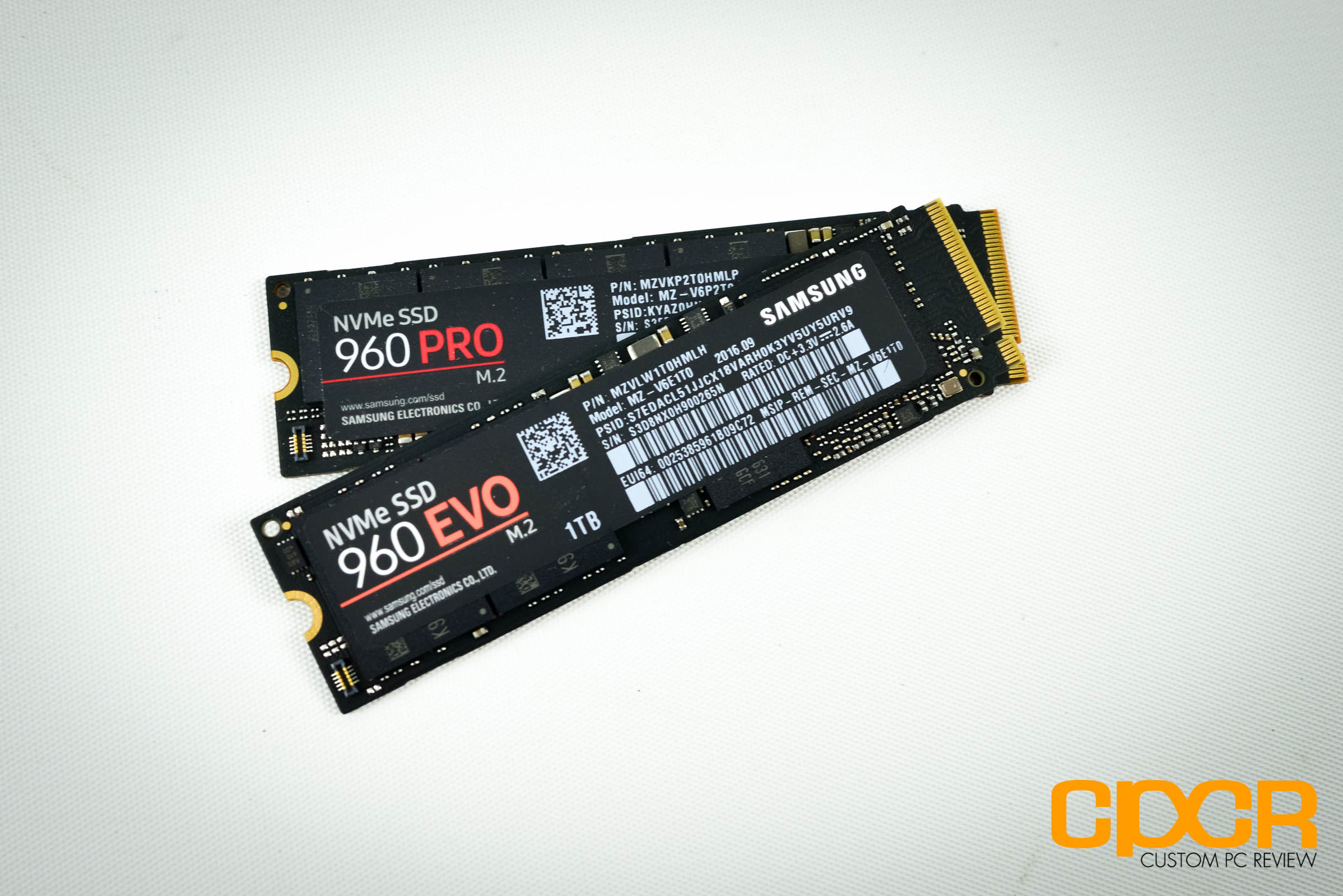
The momentus is Seagates version of competing against Intel SRT and OCZ Synapse
And by looking at your benchmarks, Seagate has done a not to shabby job